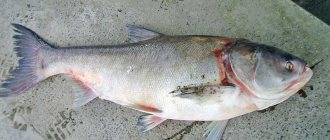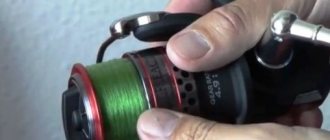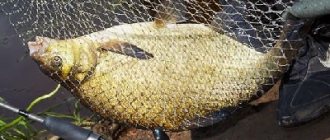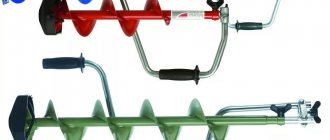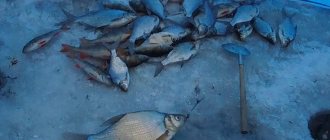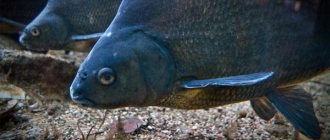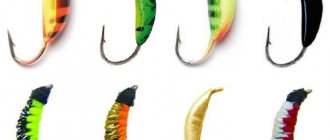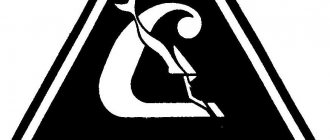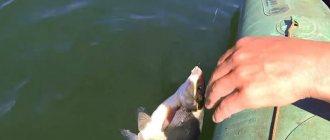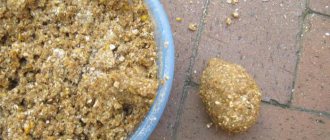Bream today is one of the popular fishing objects. And since it is found in reservoirs of various types, the gear used to catch it is very diverse. The second important factor in the variety of means for fishing the silver beauty is the personal preferences of anglers in choosing a fishing method.
And finally, we note that bream and its accompanying fish: silver bream, sopa, bluefish, change their locations throughout the calendar year. In our article on gear, we will try to take into account the above factors and tell you which fishing rods to use, in what conditions, and how to assemble them yourself.
Float rod
Let's start the story with the simplest gear: a float rod. Depending on the bream fishing conditions, the following can be used:
- fly float - when fishing from the shore on a small river or from a boat in shallow places
- lap dog - for fishing with retrieval at short distances, up to 20 meters
- match – for long-distance fishing
- plug – in places with a clean bank for point feeding of bait
The best time for float fishing is spring and early summer. It is at this time that schools of bream rise closer to the shores, where they can be caught with the specified gear. At the same time, do not forget about bait, which can keep the fish at the selected fishing point.
The following elements are placed on the match and lapdog:
- main line 0.22-0.25 mm thick
- the float needs a carrying capacity: from 2 to 15 grams depending on fishing conditions
- appropriate load of several pellets
- leash 0.12-0.14 millimeters
- hook depending on the size of the bait
The plug and fly fishing rods are equipped a little more delicately. Thus, a monofilament base usually does not exceed 0.14 millimeters in diameter, and a leash - 0.12.
Habits and nutrition
The habits of bream are quite conservative and predictable. Being a schooling fish, it prefers a sedentary lifestyle in rivers, reservoirs and lakes with weak currents and well-warmed water. At the same time, this species can successfully acclimatize in cold water bodies and slightly saline bays. Bream living in the sea are forced to lead a semi-anadromous lifestyle and rise up rivers to spawn and feed.
When examining in detail the question of what small and large bream eat, you can immediately notice a special love for cereals, small crustaceans, mollusks and various boneless organisms: worms, larvae, insects, etc. There are also cases when an adult grabs a fry. The fish spends most of its time at the bottom, choosing deep and silty places.
During sunny periods it rises closer to the surface to bask, but at the slightest noise or threat it immediately goes deeper. It is her timidity and caution that are the main factor complicating fishing.
In autumn, the habits of bream change. Due to the short length of the day and lower water temperatures, it switches from morning and evening feeding to constant feeding in order to quickly accumulate a sufficient supply of fat for the winter. In October, the habits of bream once again undergo dramatic changes - the fish gather in large schools and little by little go to the depths for wintering, but at the same time retain their appetite. This explains the possibility of successful winter fishing for both white bream and large bream.
For bream fishing, it is recommended to choose the following models:
Ring
Recently, a tackle called a ring has become popular. It is caught near the riverbed edges of large rivers, where the current is quite strong, allowing it to wash out particles of food from a large net-feeder. It consists of two parts, which are connected together by this very ring.
The first is a large feeder, with a capacity of 10 liters, lowered from the downstream side of the boat to the river bottom. It is held on a strong cord or monofilament fishing line one millimeter thick or more. At the bottom of the grid there are weights that allow you to hold the structure on the selected section of the riverbed.
The second part is mobile, which is where active fishing is carried out. Its composition:
- side fishing rod up to two meters long
- main line up to 0.30 mm
- garland, up to 3 meters long, made of 0.22-0.25 mm monofilament
- the leashes located on it range from 2 to 5 pieces, their diameter is 0.14-0.18 mm, length up to 50 centimeters
The ring is a torus, a donut, up to 5 centimeters in diameter with an additional eyelet that has a hole for the base. There is also an oblique cut on the body for fastening. Through it, the ring is put on the feeder cord, and the main fishing line from the fishing rod is passed through the eye.
A garland with a winding ring is attached to the base below this hole. When releasing the line, the heavy ring quickly delivers the equipment to the bottom and places it in the muddy wake of the feeder. The bite is transmitted directly to the fishing rod, and since there is no additional load, the fish does not feel the danger and takes it boldly.
Koltsovka
This tackle, on the contrary, only works in fairly strong currents. Here is the procedure for fishing with a ring, in which its installation will be clear:
- a large loaded mesh, its volume is 5-7 liters, filled with bait;
- we swim onto the river bed;
- we anchor on guy ropes across the current;
- we lower the feeder on a thick monofilament, one millimeter in diameter, from the side facing downstream;
- We equip the fishing rod with a reel with a fishing line of 0.22-0.25 millimeters;
- We put the eyelet of a lead ring on the end of the fishing line, and then tie a carabiner to attach the garland with hooks;
- We insert the cord from the feeder into the cut of the ring and lower the tackle into the water.
Now our garland with hooks is in a train of bait, washed out of the feeder by the current. When fishing the tackle, the carabiner rests on the eye of the ring and the tackle with the fish is pulled to the boat along the feeding cord.
Banding summer tackle. It is not advisable to fish with it in spring and autumn, since a large amount of porridge and crackers in cold water can scare off the cautious bream.
Feeder
The modern English donka is used in various fishing conditions, but is especially good where it is deep and it is inconvenient to use any float. The presence of a feeder allows you to point-feed the selected place and make long-range targeted requests.
On most reservoirs the following arrangement is used:
- middle class feeder 330-420 centimeters long
- main line: 0.30 mm monofilament or 0.14-0.16 mm braid
- a feeder with a weight that allows you to hold the tackle along the current of the selected area
- one of the popular feeder installations
- leashes with a diameter of 0.14-0.18 millimeters
Important! In a current, an asymmetrical loop works best; in still water, a paternoster or asymmetrical loop works best.
The length of the leashes varies from 30 to 70 centimeters. It depends on the strength of the current and the activity of the fish. The bites have decreased - increase the size and reduce the diameter. If the fish eats the hooks with impunity, the line segments should be shortened. The hook is selected depending on the bait used: models with a long shank are better suited for fishing with a worm, those with a short shank are better suited for fishing with maggots, corn, etc.
Onboard fishing rod
If the fishing area is deep, from three meters or more, the distance from the shore is large, beyond the control of any feeder, but the current is insignificant or absent altogether, use onboard fishing rods for fishing from a boat. This tackle is a short, up to two meters, fishing rod with a reel or reel for storing fishing line. As an option, use short, 3-4 meter fly rods.
The sideboards are equipped as follows:
- main line with a diameter of 0.20-0.22 millimeters;
- a sinker that allows you to stretch the cord in the water;
- two or three leashes with hooks of the required size for the bait used.
As a bite alarm, nods similar to those used in winter are used; they also help the bream to “play” with bait in the water column when the fish’s activity decreases.
Baits and baits
Choose bait for bream based on water temperature: in cold water, fish prefer animal baits:
- dung or earthworms;
- maggot;
- bloodworm;
And in warm water he will enjoy eating plant foods. Bites well on:
- hominy;
- barley;
- corn;
- bread dough;
- flavored wheat dough;
- small boilies;
Tips for a fisherman: How to smoke bream in a hot smokehouse - Tips for a beginner
Change any bait often for fresh one.
If you use semolina or bread as bait, then roll them into small balls with a diameter of 0.5-0.7 cm and place them on the hook so that its tip is not visible, but you can feel it.
The worms must move, and they must be pricked in bunches of 5 pieces so that the hook is not noticeable.
maggots with bloodworms. Bream likes this sandwich.
the bloodworms and plant them in bunches. This bait is universal and works well both in cold weather and in hot weather.
There are two ways to catch spring bream:
Catching bream on a donk
The classic donka for bream is gradually losing ground in front of more promising tackle, but it still has followers. It is distinguished by its simplicity of design and fishing technique. To use it, you need a piece of clean shore where you can lay out the main cord in rings without fear of snagging on foreign objects. As a last resort, spread a blanket over the place where they plan to lay everything out.
Casting is done by grasping the line directly next to the sinker. After lowering the sinker to the bottom, select the slack and hang a signaling device - a bell or bells. Fishing is done directly by the fishing line, so it is not customary to go too small with its diameter, so as not to cut your hands when jerking a trophy bream.
How to make a donk yourself
To install the bottom equipment, the first step is to prepare the reel. It is made from a piece of wood, plastic or plywood 10-15 centimeters wide, up to 30 centimeters long. Dovetail-shaped cutouts are made at the ends. A base is wound onto the reel - a monofilament cord with a diameter of 0.30 millimeters and a length of up to fifty meters.
At the end of the fishing line, a sinker is tied, the weight of which is capable of holding the equipment in the river current. Above the load, up to ten leashes are tied using the loop-in-loop method. Their length reaches 50 centimeters, and the interval should be such as to prevent overlap. Hooks are knitted in different types for different attachments and baits. This increases the likelihood of a bite.
Feeder rigs for bream for fishing in the current
Fishing for bream in the current involves installing catchy feeder equipment. We recommend using:
- helicopter and two knots;
- symmetrical loop;
- asymmetrical;
- paternoster;
Due to its ease of installation and catchability, the Gardner paternoster is the favorite feeder equipment of many bream fishermen, especially beginners. The downside is the twisting of the line, which appears after just a few casts. The problem can be solved simply: lift the feeder and let it unwind. Twisting occurs especially often with monofilament fishing line; on braided line this defect appears less frequently.
The principle of knitting symmetrical and asymmetrical loops is no different. The difference in the equipment itself is clear from its name. In a symmetrical loop, both sides of the loop are the same length, while in an asymmetrical one, one side is shorter - this allows the bream to swallow the bait properly and at the same time receive signals at the tip of the rod even before the bream feels the weight of the feeder.
A helicopter and two knots is good because it allows you to catch light baits such as a bunch of maggots in suspension. A strong current picks up a long leader and bait and pulls them downstream. This quickly arouses the interest of the feeding fish and a bite occurs on the tip of your feeder.
At the height of summer, there is no question about what time of day to catch bream - it simply does not bite in the morning, afternoon and evening. As soon as darkness comes, he is like an owl, coming out to feed.
Rubber
A donka with a rubber shock absorber, also known as an elastic band, is an improved version of the previous tackle. Thanks to its design, it has the following advantages:
- no need for constant removal from water
- dampening the jerks of a strong opponent - trophy bream
- the equipment is arranged in an orderly manner, the bait is more accurate
- Possibility of self-hatching of fish due to rubber cushioning
Depending on the tasks being solved, the elastic can be made in a small version for hand casting. More powerful options have to be brought from a boat, the same applies to feeding the fishing spot.
Line thickness and hook numbers
Let us summarize the described equipment in terms of line diameters and hook thicknesses. For summer fishing:
- main line – monofilament with a diameter of 0.15-0.3 mm
- leashes are usually set at a rate of 0.02 millimeters thinner than the base
- hooks No. 10-14, depending on the size of the bait, made of medium-thick wire
For winter:
- main line – monofilament with a diameter of 0.12-0.14 mm
- leashes from 0.08 to 0.12
- hooks No. 14-16 or miniature jigs, the thicker the line, the larger the jig
Other methods
Other fishing methods are not so often used in hunting specifically for bream, but are known to fishermen from fishing other carp fish: crucian carp, carp, carp. All the methods that we describe below are similar in construction, differing only in implementation.
Zakidushka
In our case, we will call a casting tackle, which differs from a simple donkey only in the presence of a rod and a spinning reel, which allow you to cast further and more accurately. Often the basis is spinning rods with a large dough and a slow action. A typical example is the Chinese “Crocodile” fishing rod. In its kind, it is considered practically indestructible, capable of breeding trophy fish of any power.
The reel is installed with a rear clutch, its size is 4000-6000 according to the Shimano-Daiwa classification. It is this “meat grinder” with a 5:1 gear ratio that is the most popular option. The bait is equipped with a sinker or feeder of appropriate weight for the specific flow. Most often, 2-3 leashes are used, one of which is tied below the load.
Pacifier
The work of the nipple is based on the fish’s love for sucking tasty components. For this type of gear, dough-like mixtures are used that adhere well to the base and do not disintegrate in water. There are several types of feeders used, where it is stuffed:
- cork
- spring
- banjo
- flat
Regardless of the design, the feeder is equipped with short leashes with hooks, on which the fish are caught.
